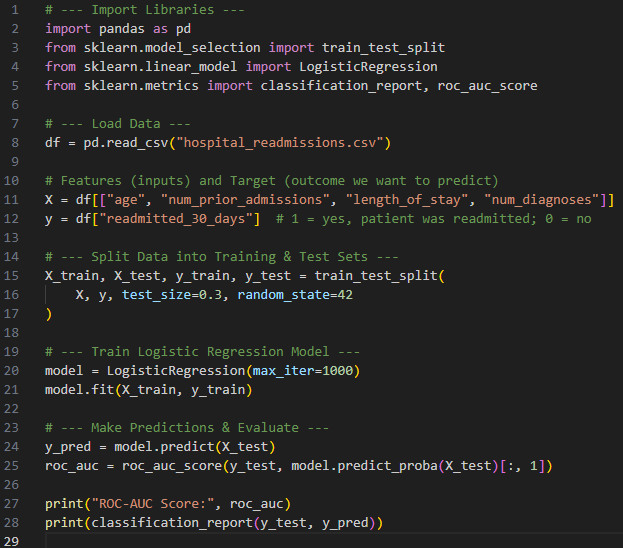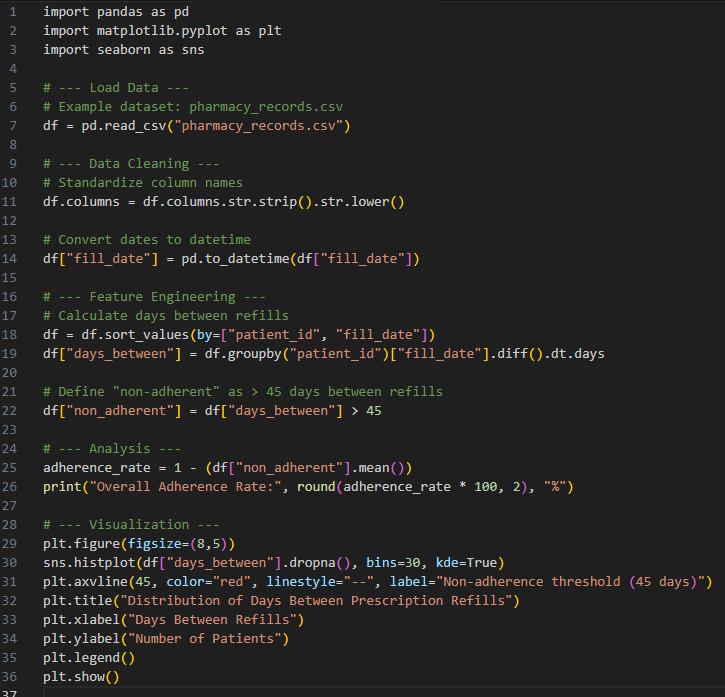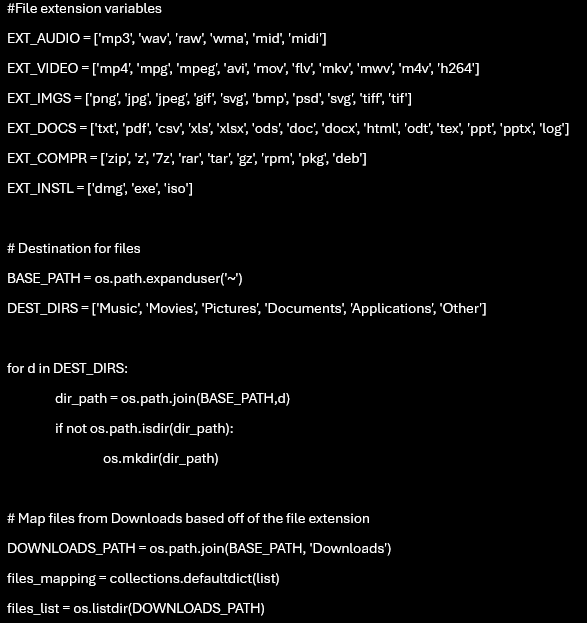
Python
[pai-thaan]
I leverage Python to automate complex workflows, perform advanced data analysis, and build clear, compelling visualizations. My projects showcase the ability to streamline processes, reduce manual effort, and deliver actionable insights that drive measurable results. Key highlights include:
Enhancing data analysis pipelines and integrating insights into interactive Tableau dashboards at DaVita Kidney Care, improving decision‑making for clinical and business teams.
Automating reporting and troubleshooting workflows, cutting turnaround time and significantly boosting operational efficiency.
Applying statistical analysis and rigorous data cleaning to transform raw healthcare data into insights that support compliance, cost reduction, and improved patient outcomes.
Python Project: Predicting Hospital Readmissions
Hospitals face high costs and penalties when patients are readmitted soon after discharge. Often, these readmissions could be prevented with earlier intervention.
This project demonstrates how Python can be used to:
Analyze patient data such as age, number of prior admissions, length of stay, and diagnoses.
Build a predictive model to estimate whether a patient is likely to be readmitted within 30 days.
Evaluate performance using standard healthcare analytics metrics.
The goal: help care teams identify high‑risk patients early, so resources can be focused where they matter most.
This project demonstrates skills in data cleaning and feature selection with pandas, predictive modeling using scikit‑learn, and model evaluation with healthcare‑relevant metrics such as ROC‑AUC, precision, and recall — all while translating technical output into real‑world clinical impact.
Python Project: Analyzing Medication Adherence Patterns
Medication non-adherence is a major challenge in healthcare. Patients who skip or delay doses often experience worse outcomes, leading to higher costs and hospitalizations.
This project demonstrates how Python can be used to analyze and visualize medication adherence trends from patient data. The analysis helps providers identify at-risk patients and design targeted interventions.
Why This Matters
• For clinicians: identifies patients who may need reminders, education, or support.
• For pharmacies: highlights refill trends that affect inventory and service planning.
• For patients: improving adherence leads to better outcomes and fewer complications.
This project highlights skills in data wrangling with pandas, feature engineering to measure refill behavior, and data visualization using matplotlib and seaborn. It also demonstrates the ability to connect technical analysis to meaningful healthcare outcomes, such as identifying non‑adherence patterns.
Pitch Perfect: Cleaning Cricket Data with Python
In this project, I explored data cleaning and analysis using Python’s Pandas library with a dataset of cricket players from ESPN. Using Jupyter Notebook, I documented the process with code and screenshots to showcase the workflow. This project aimed to deepen my understanding of Pandas in data analytics while sharpening my Python programming skills.
Tidynator 3000: The Folder Whisperer
This Python program organizes files in the Downloads folder by categorizing them into directories (e.g., Music, Movies, Documents) based on their extensions. It automates repetitive tasks, enhancing productivity and showcasing Python's practical capabilities.
Key Features
Dynamic Directory Management: Creates necessary folders if missing.
File Categorization: Maps file extensions to predefined categories.
Batch File Movement: Automates sorting with Python’s OS and collections modules.
Skill Set
Python programming, file handling, and debugging. Knowledge of automation and data structures for efficient organization.



